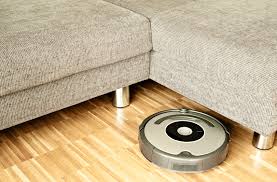Think buying a vacuum means running to the store and picking up the first one on sale for a good price? Think again! If you’re in the market for a new vacuum, taking the time to consider a few key points will save your wallet and your floors.
Type of Flooring In Your Home:
 Not all vacuums were created equally. While many vacuum cleaners have different settings for carpet and tile or hardwood flooring, they don’t necessarily clean those types of floors as well as others.
Not all vacuums were created equally. While many vacuum cleaners have different settings for carpet and tile or hardwood flooring, they don’t necessarily clean those types of floors as well as others.
If your home has looped carpet, shag carpet or Berber-style carpeting, for example, you will definitely want to look for a vacuum cleaner that has a detachable beater bar. With looped or very dense style carpets, the brushes on beater bars may do more harm than good. You’ll also want to look for a vacuum with specific height settings rather than just “bare floor” or “carpet”. Adjusting the height of the brushes can have a huge impact on how well the unit “sucks up” dirt, pet hair, and dust.
If you have a home or apartment that has mainly hardwood flooring, linoleum, or tiles, the vacuum you choose should come with a sturdy, detachable wall/floor brush accessory. While the general “bare floor” setting may work for a quick cleaning, to vacuum up dust or dirt in corners or under furniture, this detachable brush is an absolute must.
Upright vs Canister:
Not sure what the advantages or disadvantages of upright vacuums compared with a canister style machine? There are several main features that may make one style a more practical purchase over the other.
Upright vacuum cleaners are usually more heavy duty than canister-style units. While this can make them difficult to lug upstairs, the upside is you won’t have to bend down or pull it behind you. Uprights usually come with several accessories and attachments, so they tend to handle cleaning furniture and different types of carpeting well. However, it can be difficult to vacuum drapery or walls with an upright.
Canister vacuums are usually lightweight compared to uprights and have the advantage of ease of use when cleaning drapery, under furniture or on bare floors. In addition, they often offer more robust suction than uprights. But there are downsides, too: canister units may not necessarily be the best choice for those with back problems or for homes with large areas of carpeting. It can also be awkward to pull a canister vacuum around corners or furniture.
Airflow and Amps:
While you may assume that more the more amps or wattage a vacuum uses the better it will clean, this is not always the case. It’s true a vacuum that has more amps does have potentially more suction power, but there are other measurements that determine how well a machine actually utilizes the wattage or amps the engine can push out.
Many vacuum cleaners will list an airflow or capacity rating as well as listing the wattage or amps the motor has. Pay attention to these numbers as well as considering the wattage when shopping for the most power efficient vacuum with the best cleaning capacity for your budget.

